Related Research Articles
Hustler or hustlers may refer to:
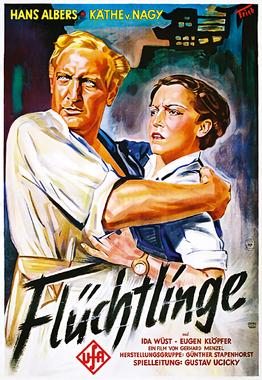
Refugees is the 1933 German drama film, directed by Gustav Ucicky and starring Hans Albers, Käthe von Nagy, and Eugen Klöpfer. It depicts Volga German refugees persecuted by the Bolsheviks on the Sino-Russian border in Manchuria in 1928.

Anita Berber was a German dancer, actress, and writer who was the subject of an Otto Dix painting. She lived during the time of the Weimar Republic.
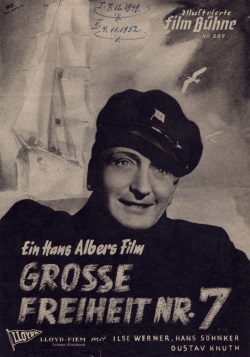
Große Freiheit Nr. 7 is a 1944 German musical drama film directed by Helmut Käutner. It was named after Große Freiheit, a street next to Hamburg's Reeperbahn road in the St. Pauli red light district.
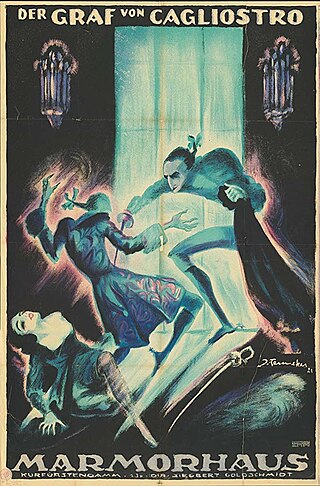
Der Graf von Cagliostro is a 1920 silent film directed and co-written by Reinhold Schünzel and starring Schünzel, Anita Berber and Conrad Veidt. It depicts the life of the eighteenth century Italian mesmerist and occultist Alessandro Cagliostro, who called himself Cagliostro. The film is considered a lost film.
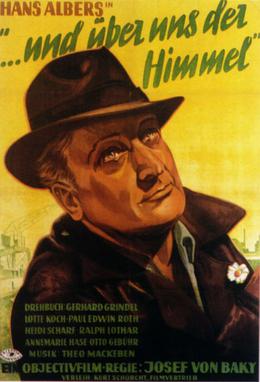
And the Heavens Above Us is a 1947 German drama film directed by Josef von Báky and starring Hans Albers, Paul Edwin Roth and Lotte Koch. It was part of the post-war series of rubble films.
The Story of Dida Ibsen is a 1918 German silent drama film directed by Richard Oswald and starring Anita Berber, Conrad Veidt and Werner Krauss. It is an adaptation of Margarete Böhme's 1907 novel of the same title, a sequel to her best-known work The Diary of a Lost Girl. It was one of a series of enlightenment films made by Oswald during the period.

The Mad Bomberg is a 1957 West Germany comedy film directed by Rolf Thiele and starring Hans Albers, Marion Michael and Harald Juhnke. It was shot at the Göttingen Studios with sets designed by the art directors Gabriel Pellon and Peter Röhrig. The film is an adaptation of the 1923 novel of the same title by Josef Winckler which was based on a real historical Westphalian aristocrat of the nineteenth century. The film was conceived partly as an attempt to replicate the success of Albers' hit film Münchhausen (1943).

The Copper also translated as The Grasper is a 1958 West German crime film directed by Eugen York and starring Hans Albers, Hansjörg Felmy and Susanne Cramer. It is a remake of the 1930 film The Copper which Albers had also starred in. It was shot at the Tempelhof Studios in West Berlin as well as on location in Hamburg and Essen. The film's sets were designed by the art directors Gabriel Pellon and Theo Zwierski.

The Three Mannequins is a 1926 German silent film directed by Jaap Speyer and starring Hans Albers, Anton Pointner, and Paul Graetz. It was shot at the Terra Studios in Berlin. The film's sets were designed by the art director Hans Jacoby. It premiered at Berlin's Marmorhaus.
The Trumpets are Blowing is a 1926 German silent film directed by Carl Boese and starring Bruno Kastner, Hugo Fischer-Köppe, and Eddie Seefeld.
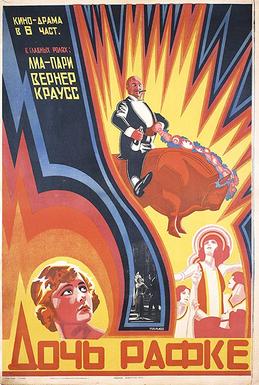
Fräulein Raffke is a 1923 German silent film directed by Richard Eichberg and starring Werner Krauss, Lydia Potechina and Lee Parry. A "Raffke" was Weimar era slang for a money accumulator.
The Skull of Pharaoh's Daughter is a 1920 German silent film directed by Otz Tollen and starring Emil Jannings, Erna Morena and Kurt Vespermann.
The Three Marys or The Three Marys and the Lord of Marana is a 1923 Austrian-German silent film directed by Reinhold Schünzel and starring Schünzel, Anita Berber and Lya De Putti.
The Golden Plague is a 1921 German silent thriller film directed by Louis Ralph and Richard Oswald and starring Louis Ralph, Anita Berber and Paul Bildt. An anarchist attempts to use a formula for artificial gold as part of a plan to flood the world market, causing an international crisis.

The Red Poster is a 1920 German silent crime film directed by Emil Justitz.
Friedrich Emil Albes was a German actor and film director of the silent era.

Variety is a 1935 French-German drama film directed by Nicolas Farkas and starring Annabella, Hans Albers and Attila Hörbiger. It is based on the 1912 novel The Oath of Stephan Huller by Felix Hollaender. It features a love triangle between three performers of a high wire act.

The Emperor's Sweetheart is a 1931 German historical musical comedy film directed by Hans Tintner and starring Liane Haid, Walter Janssen and Wilhelm Bendow. It was shot at the Grunewald Studios in Berlin. The film's sets were designed by the art director Max Heilbronner. An operetta film, it is based on the stage operetta of the same title composed by Emil Berté. It was distributed by the German branch of the American company Fox Film.

A Man Astray is a 1940 German comedy adventure film directed by Herbert Selpin and starring Hans Albers, Charlotte Thiele and Hilde Weissner. The film is an adaptation of the 1938 novel Percy auf Abwegen by Hans Zehrer. It was shot at the Halensee Studios in Berlin and the Bavaria Studios in Munich. Location shooting took place around Lake Starnberg in Bavaria. The film's sets were designed by the art directors Paul Markwitz and Fritz Maurischat. A financial success, it was produced and distributed by Tobis Film, one of Nazi Germany's leading film companies.
References
- ↑ Giesen p.36